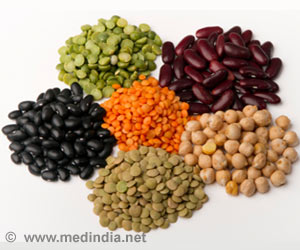-
 play_arrow
play_arrow
Radio Rehoboth
Swap Pulses For Protein & Grains for a Nutritious American Diet


Results showed an improved nutritional profile of the diet. Specifically, the addition of about
.
Additionally, they found that substituting � cup of pulses daily in place of one ounce of refined grains daily while keeping calories constant, increases fiber, magnesium, copper, and potassium, a nutrient of concern, by more than 10%.
Advertisement
“Our results suggest that encouraging increased pulse consumption may be an effective strategy for improving nutrient intake and achieving a healthier dietary pattern,” states author Victor Fulgoni III, PhD, of Nutrition Impact, LLC.
The findings are consistent with the body of existing peer-reviewed studies that show the inclusion of pulses as part of a plant-forward dietary strategy imparts cardiovascular, metabolic, and gut protective effects; improves weight outcomes, and low-grade inflammation, and may play a role in immune-related disease risk management.
The American Heart Association and other public health organizations recommend adding more plant-based proteins and less animal protein to reduce the risk of heart disease, high blood pressure, and high cholesterol.
“This research underscores the fact that pulses are a nutritional powerhouse,” said Tim McGreevy, CEO, USA Dry Pea and Lentil Council and American Pulses Association. “They are high in fiber, plant protein, and several important macronutrients. We know this and are working with our partners to increase awareness about the nutritional benefits of regular pulse consumption.”
Pulses are so nutritious that dietary guidelines globally include them in both the vegetable and/or protein food groups or as a separate food group altogether. The ‘Dietary Guidelines for Americans 2020 – 2025’ and the USDA’s ‘Choose My Plate’ indicate that beans, peas, and lentils can be considered as part of the vegetable or protein groups.
Reference :
- Effect of Adding Pulses to Replace Protein Foods and Refined Grains in Healthy Dietary Patterns – (https://www.mdpi.com/2072-6643/15/20/4355)
Source: Eurekalert
Go to Source:https://www.medindia.net/news/swap-pulses-for-protein-grains-for-a-nutritious-american-diet-214315-1.htm
Author:
Written by: RSS
Similar posts
Chart
Top popular

News Briefs 10/17/23
Board of Commissioners Workshop & Special Meeting – November 6

Six Sussex road projects considered in latest CTP
NFL Week 17 highlights: Packers, 49ers, Saints, Steelers win, Cardinals stun Eagles
Knicks vs. Cavaliers prediction, odds, line, spread, time: 2023 NBA picks, Nov. 1 best bets from proven model
Copyright 2023 East Sussex Public Broadcasting, Inc.





